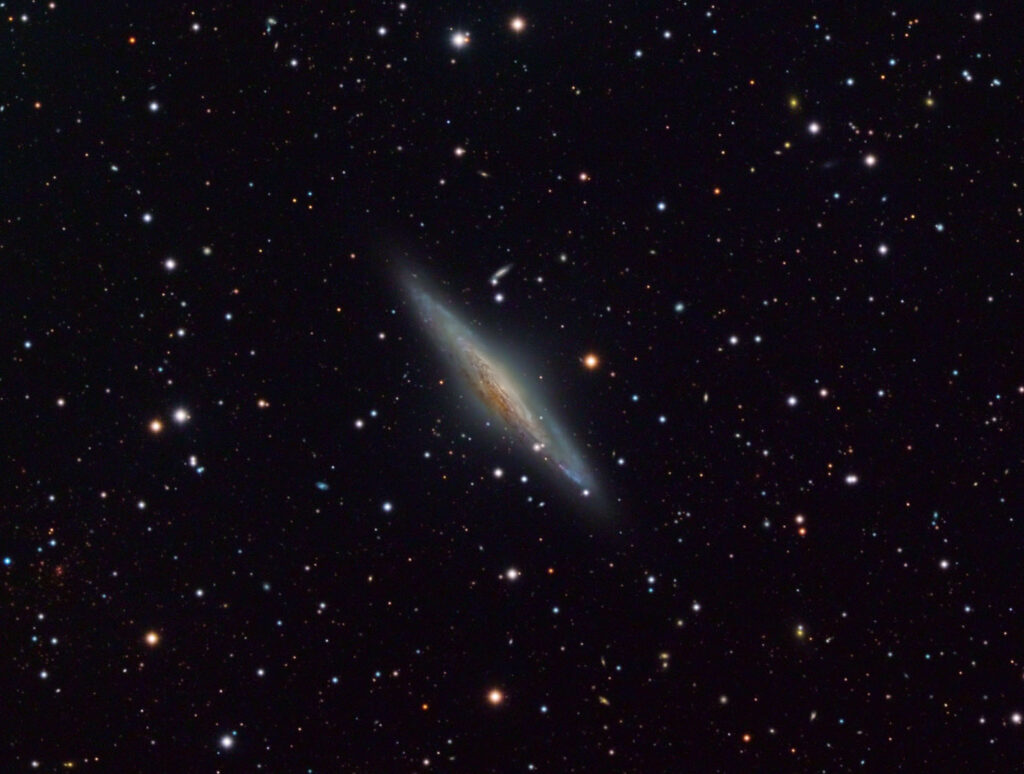NGC 2683
Spiral Galaxy, Lynx
- Description
- Technical
- Links
NGC 2683 is a field spiral galaxy discovered by William Herschel on February 5, 1788. It was nicknamed the “UFO Galaxy” by the Astronaut Memorial Planetarium and Observatory. It is viewed nearly edge-on from Earth’s location in space and is located between 16 and 25 million light-years away.
NGC 2683 is receding from Earth at 410 km/s (250 mi/s), and from the Galactic Center at 375 km/s (233 mi/s). The reddened light from the center of the galaxy appears yellowish due to the intervening gas and dust located within the outer arms of NGC 2683. Its apparent magnitude is 10.6 making it not visible to the human eye without the aid of a small telescope.
While usually considered an unbarred spiral galaxy, recent research suggests it may in fact be a barred spiral galaxy; its bar is hard to see due to its high inclination. Further support for the presence of a bar stems from the X-shaped structure seen near its centre, which is thought to be associated with a buckling instability of a stellar bar. It is also both smaller and less luminous than the Milky Way with very little neutral hydrogen or molecular hydrogen and a low luminosity in the infrared, which suggests a currently low rate of star formation.
NGC 2683 is rich in globular clusters, hosting about 300 of them, twice the number found in the Milky Way. Due to its vast distance and complexity (due to the association of Globular Clusters bound to it), NGC 2638’s mass has not been calculated as accurately as it could be. Otherwise its volume and vector motions are reasonably well known and characterized.
Telescope: Astro Physics 175EDF f8.3
Mount: Astro Physics 3600GTO “El Capitan”
Camera: SBIG STT8300
Guider: Mini Borg 50 / SBIG STi
L: 60×10 mins = 600 mins, R: 24×10 mins = 240 mins, G: 24×10 mins = 240 mins, B: 24×10 mins = 240 mins
Total Imaging Time: 22h 00m
Data Imaged remotely over 5 nights during February 2020.
Data acquisition & Processing by David Churchill.
None

